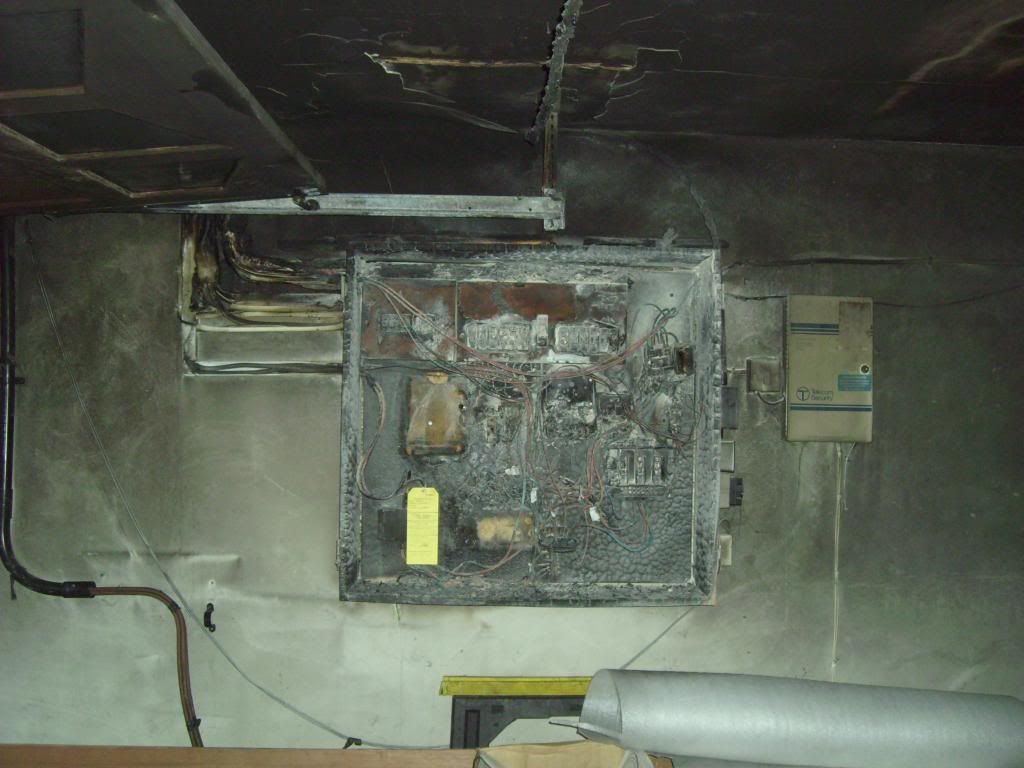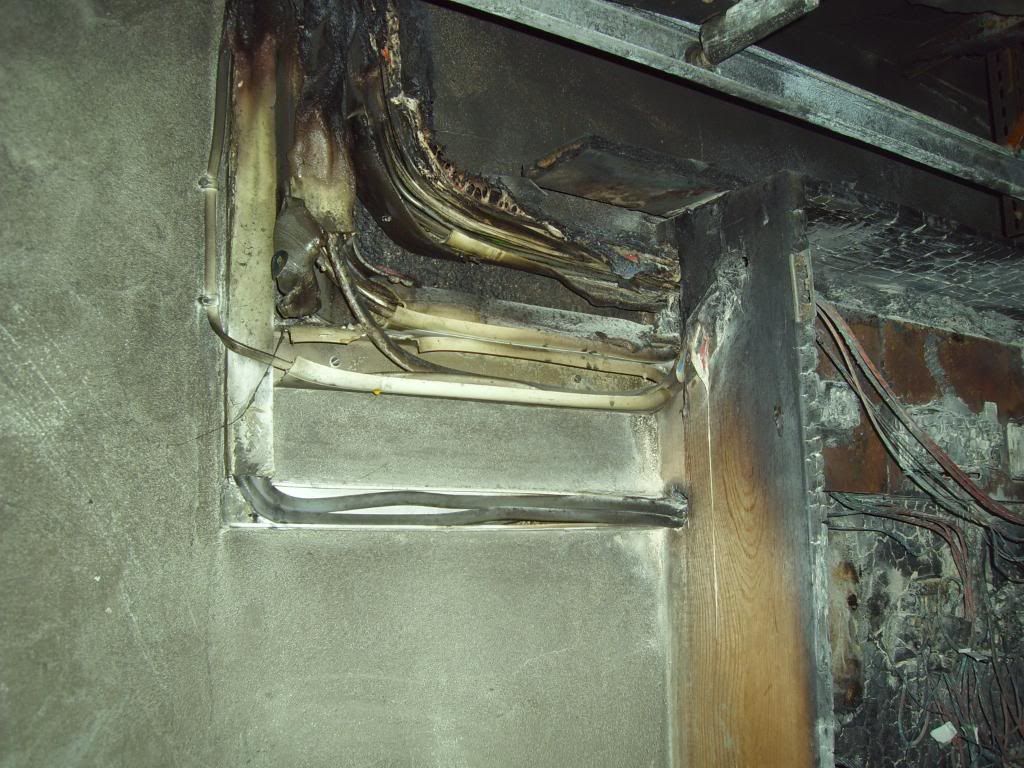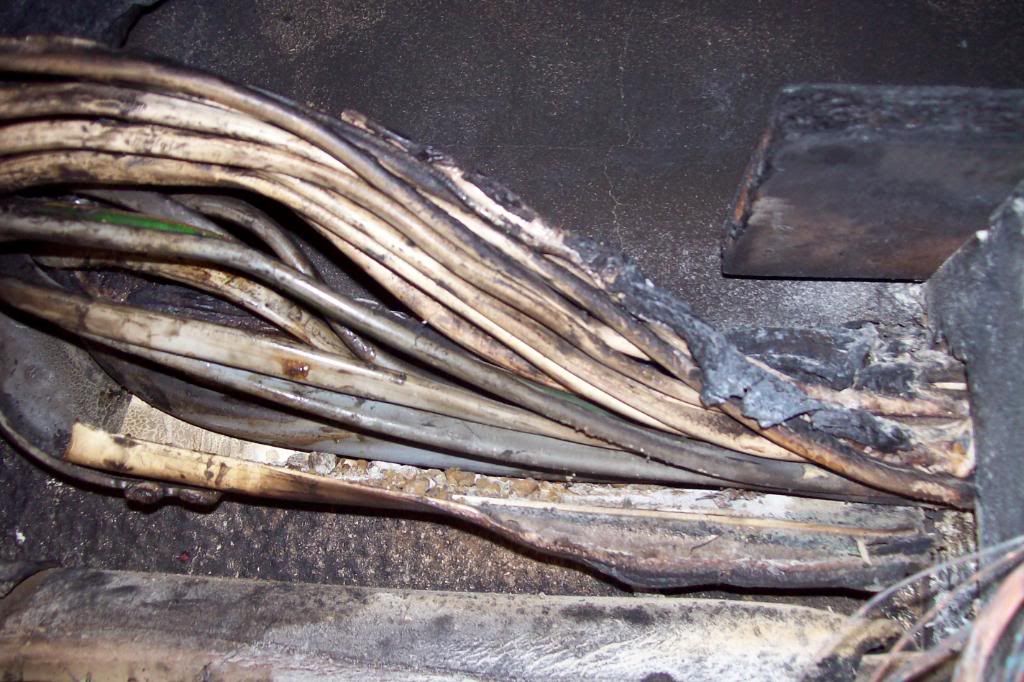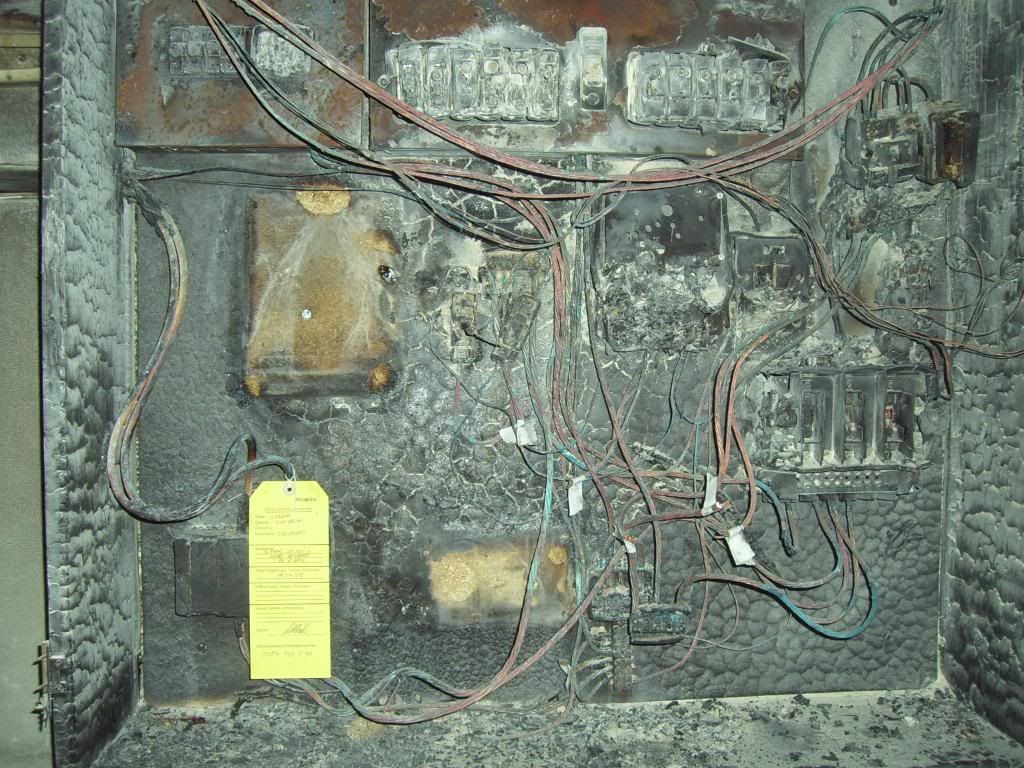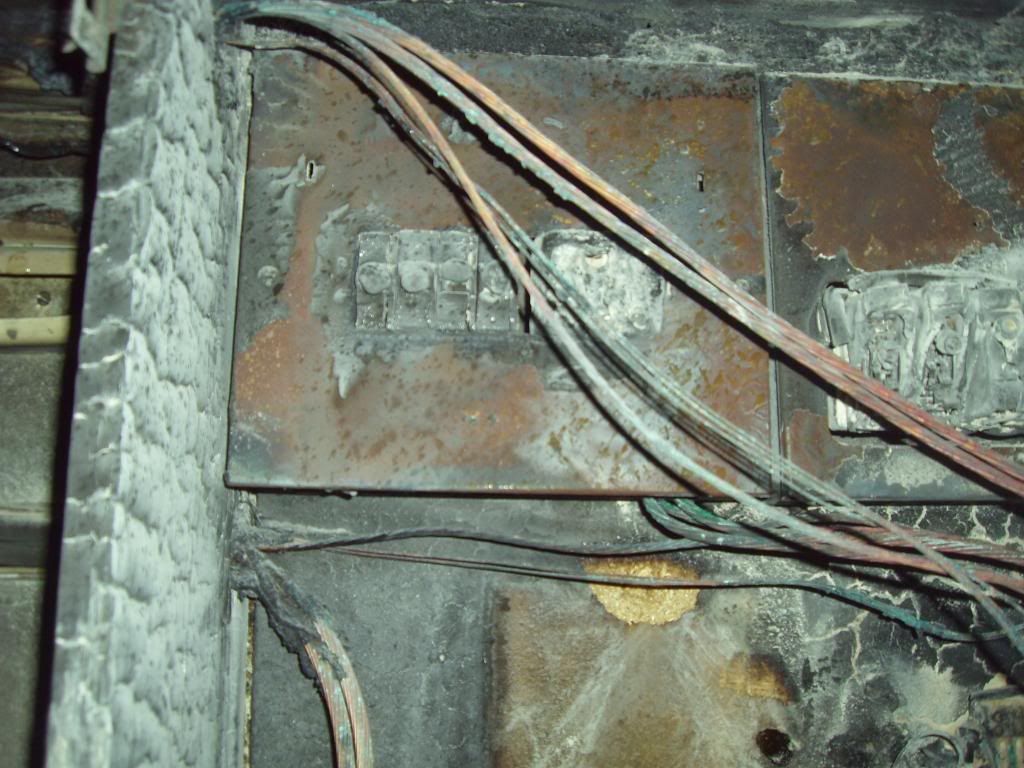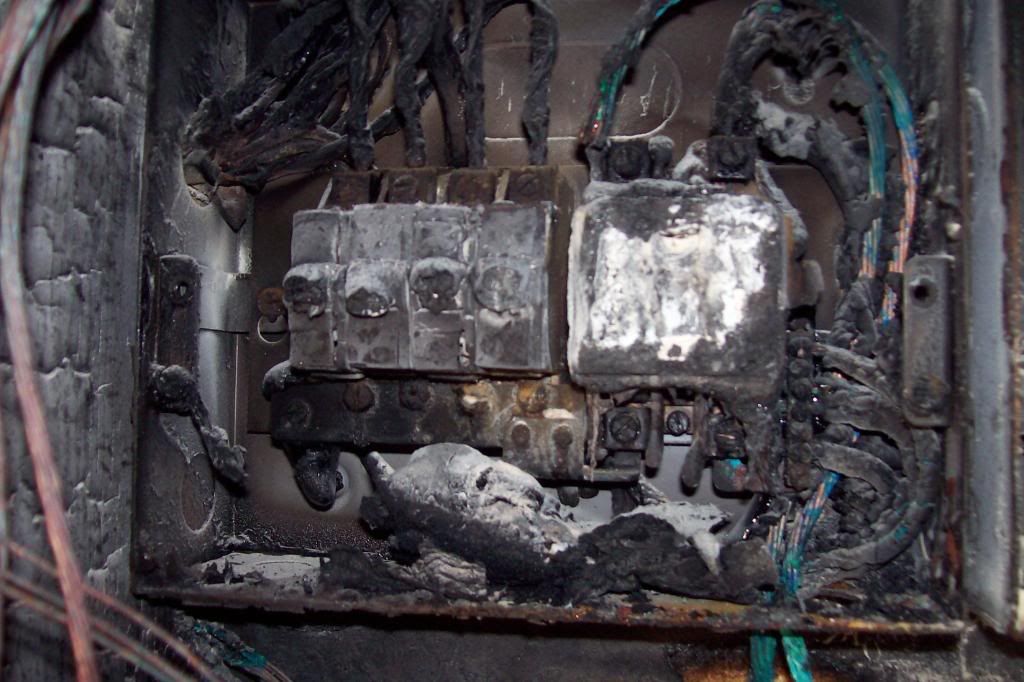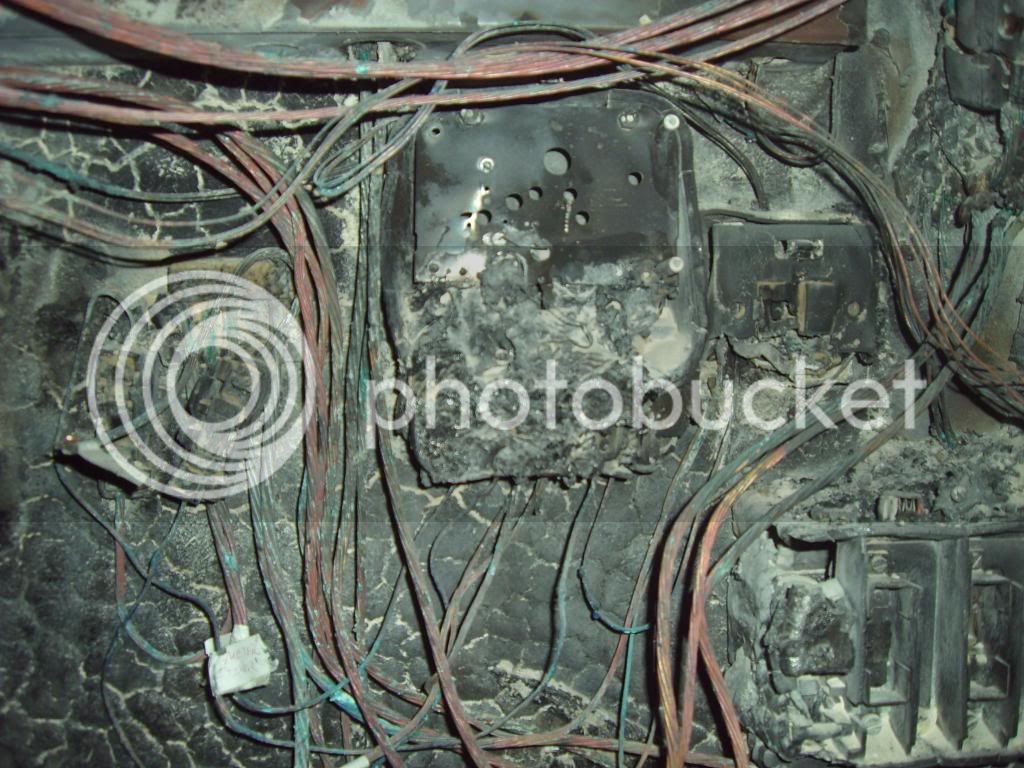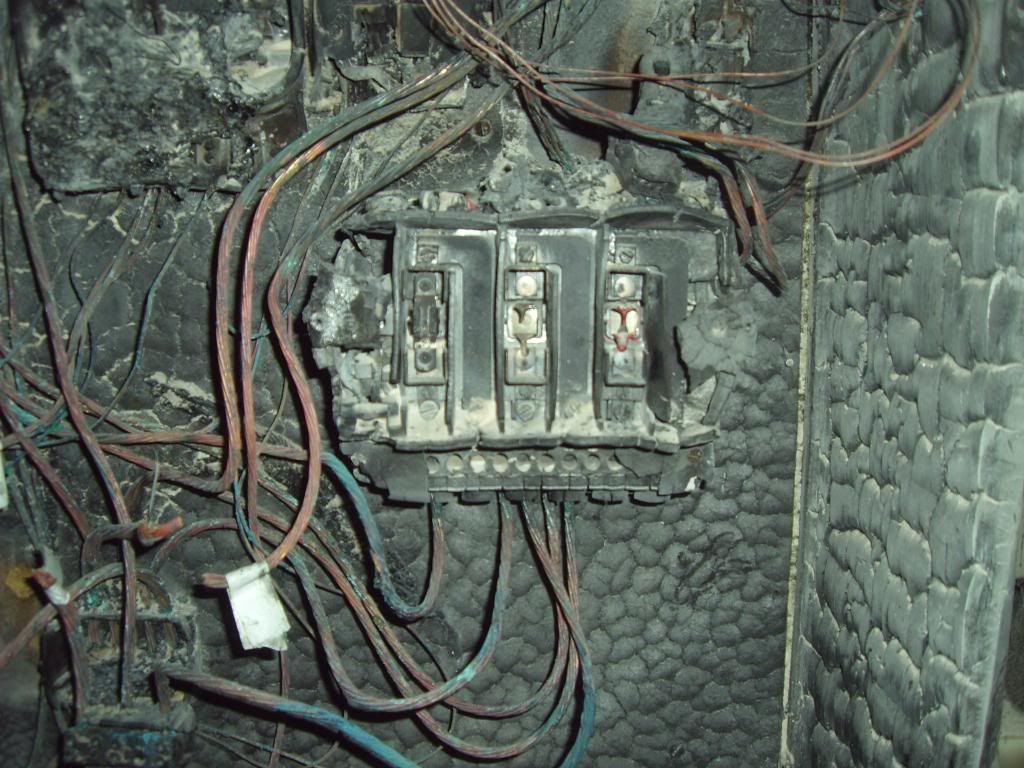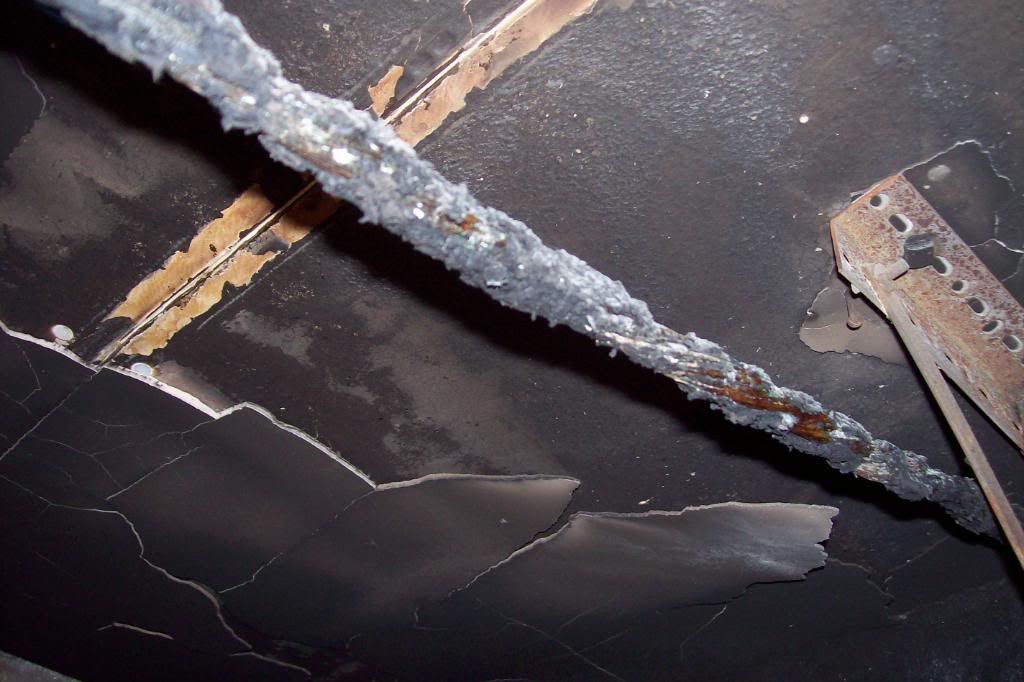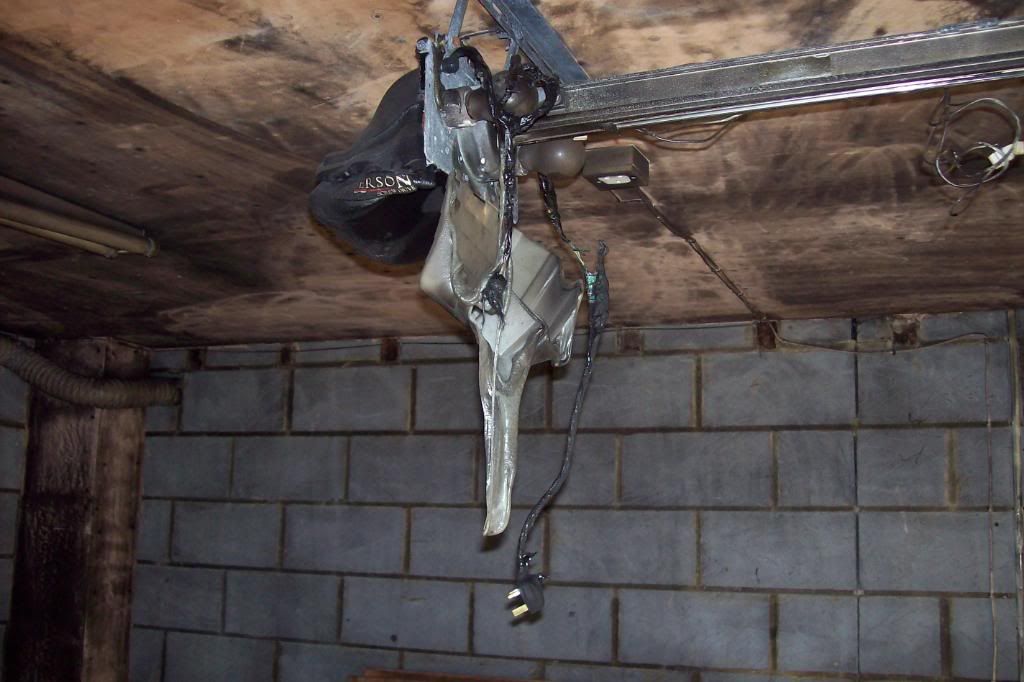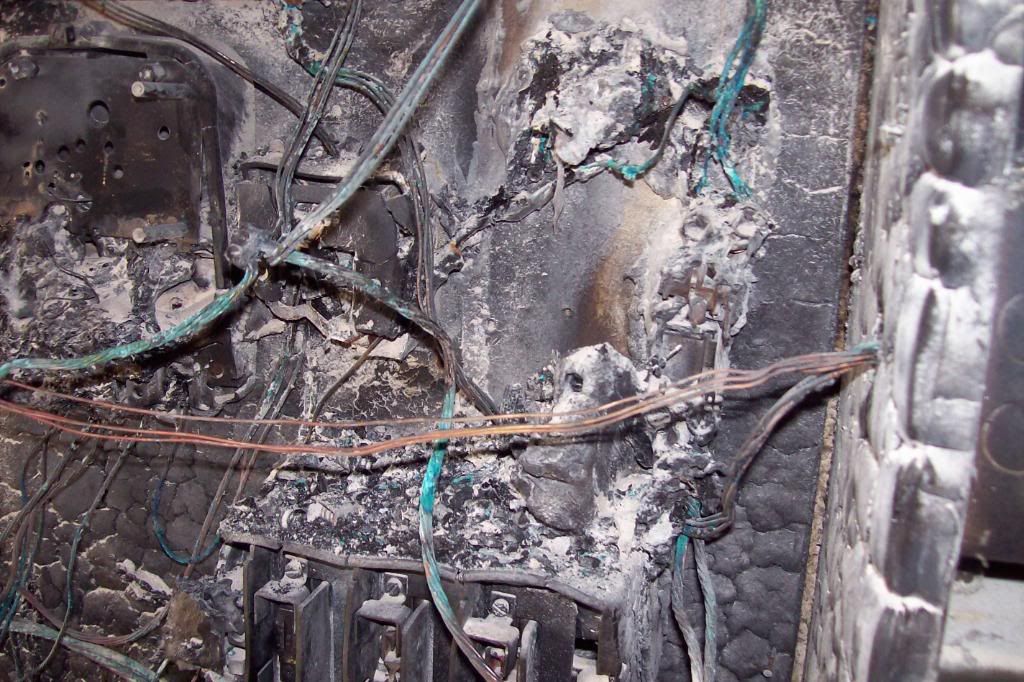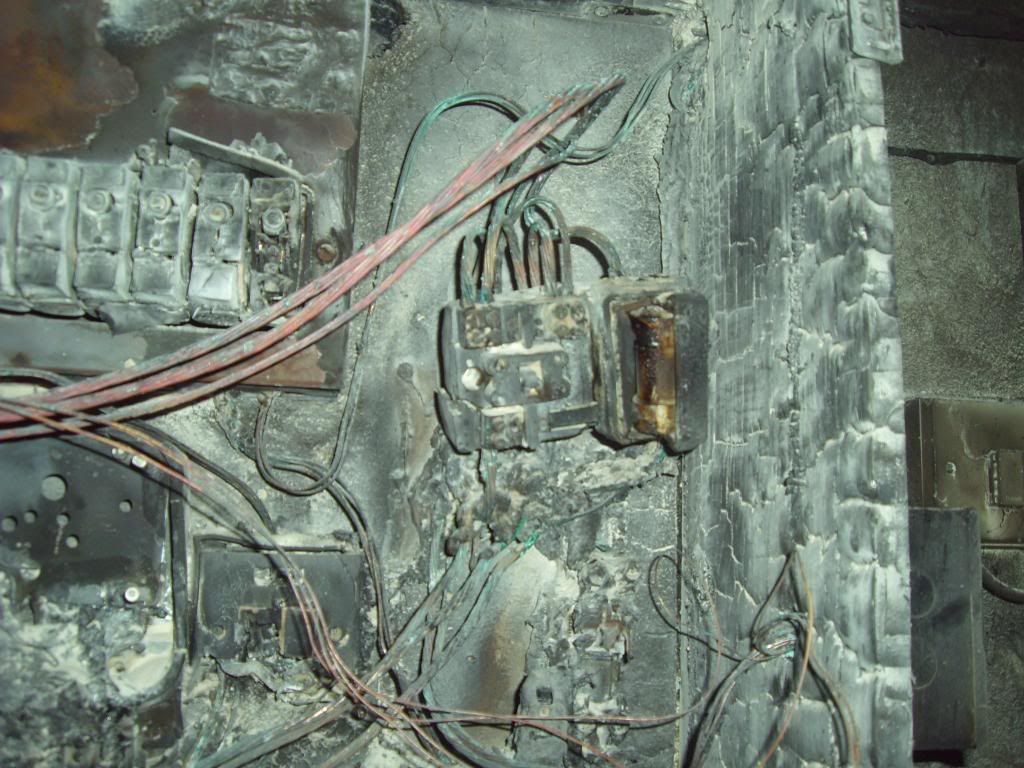You may have seen these pics posted on another forum last year. It was a fire at the intake position of a country house that was caused by a loose connection on one of the supply phases. The fire started around 1am when the 19Kw water storage heater kicked in. All the smoke alarms had no batteries and the occupiers were luckily woken by the crying toddler who's bedroom above filled with smoke.
1st pic, main view
2nd pic, garage door opener
3rd pic, board No1
4th pic, disused storage heater board
This was a TT system yet the only Rcd was on a disused storage heater board
I have many more pics if anyones interested.




1st pic, main view
2nd pic, garage door opener
3rd pic, board No1
4th pic, disused storage heater board
This was a TT system yet the only Rcd was on a disused storage heater board
I have many more pics if anyones interested.









